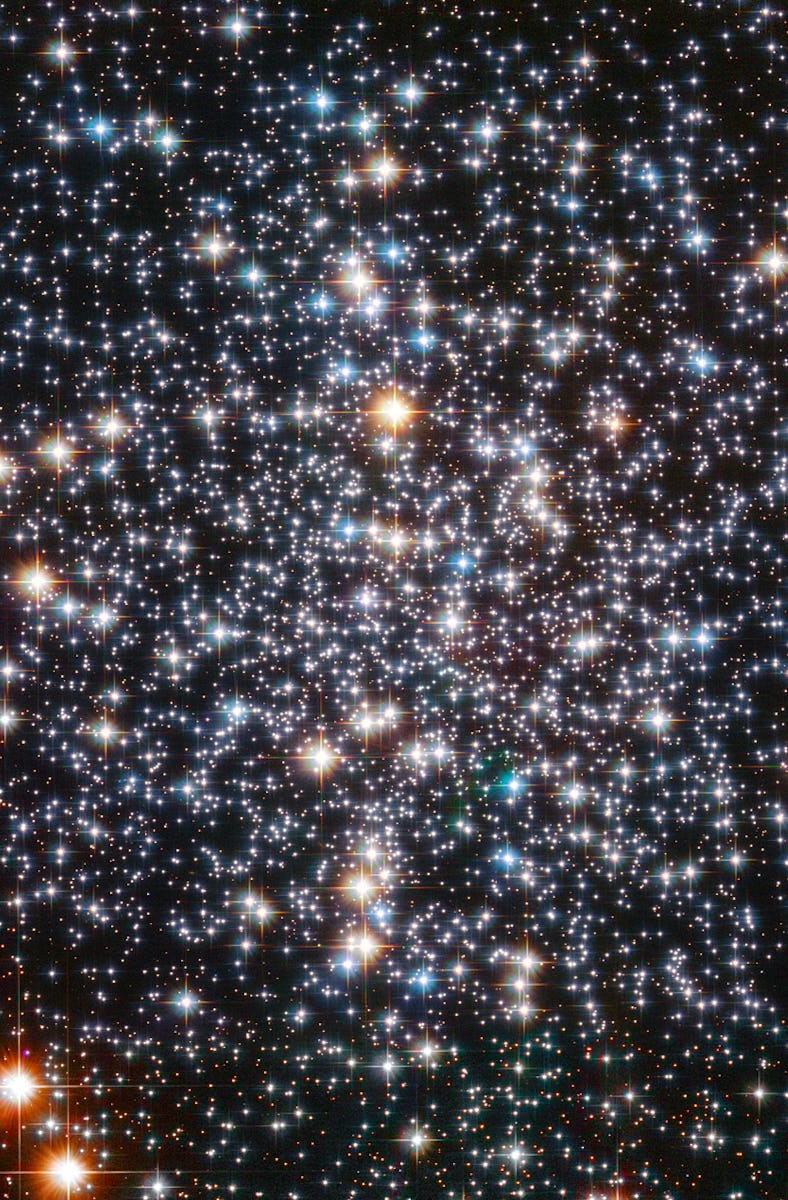Hubble May Have Finally Found a Black Hole "Missing Link"
Astronomers claim they've made the most likely intermediate-mass black hole sighting yet.

The Hubble Space Telescope may have found a missing link in cosmic evolution, hidden in the heart of a nearby star cluster.
Astronomer Eduardo Vitral, of the Space Telescope Science Institute, and his colleagues mapped the motion of hundreds of thousands of stars in a globular cluster (a densely-packed group of hundreds of thousands of stars,) called Messier 4, which lies about 6,000 light years away. The stars moved as if caught by the gravitational pull of something about 800 times more massive than our Sun — something the astronomers couldn’t actually see. The mystery object might be an elusive type of object called an intermediate-mass black hole.
Astrophysical Missing Link
If astrophysics has a cryptid, it would be the intermediate-mass black hole: a black hole a few hundred to a few hundred thousand times the mass of our Sun. At least a hundred million of much smaller black holes litter our galaxy — the burned-out, collapsed ruins of massive stars a few times larger than our Sun.
Supermassive black holes, cosmic behemoths with the massive of millions or even billions of stars, are rare in comparison, but there’s one lurking at the center of nearly every galaxy, including our own.
Messier 4 is about 6,000 light years away. It took 12 years of Hubble observations in order to map the motion of the stars and discover the invisible mass hidden in its center.
One theory suggests that supermassive black holes evolved when a few million stellar-mass black holes merged with each other (and pulled in other mass, like unwary stars or convenient clouds of gas and dust) and eventually formed something large enough to be the center of gravity for an entire galaxy. Astronomers have seen stellar-mass black holes merge with each other before, and they’ve also seen evidence of supermassive black holes merging — so the theory makes sense, except for the missing link.
If black holes merged and merged again to build up supermassive black holes, you’d expect to see some black holes with a few hundred, or even a few tens of thousands, more mass than our Sun. You’d also expect them to be rarer than small, stellar-mass black holes, but more common than supermassive ones.
But these intermediate-mass black holes are like the astronomical version of Bigfoot: there have been a handful of possible sightings, which are hard to explain any other way, but no one has ever found real proof.
One Step Closer to the Truth
Using data from Hubble and the European Space Agency’s Gaia space telescope, Vitral and his colleagues say they’ve found some of the most compelling intermediate-mass black hole evidence yet – although it’s still not definite proof. Hubble spent 12 years mapping the motion of individual stars in Messier 4, which revealed the presence of an invisible 800-solar-mass object at the heart of the cluster. That’s a lot of mass, and it’s packed into an area of space too small to be anything but a black hole, according to Vitral and his colleagues.
If the astronomers are right, the object is a smallish intermediate-mass black hole just 6,000 light years from Earth, close enough for astronomers to study with relative ease.
The handful of other possible intermediate-mass black holes astronomers have discovered in the last 25 years or so tend to be hovering awkwardly on the edges of other galaxies or in dense globular clusters like Messier 4. It’s possible that these mid-sized missing links were once at the heart of dwarf galaxies like the Large Magellanic Cluster, under their small homes merged with a larger galaxy. That lines up well with the idea that most globular clusters are the remains of small galaxies that got swallowed up by a larger neighbor.